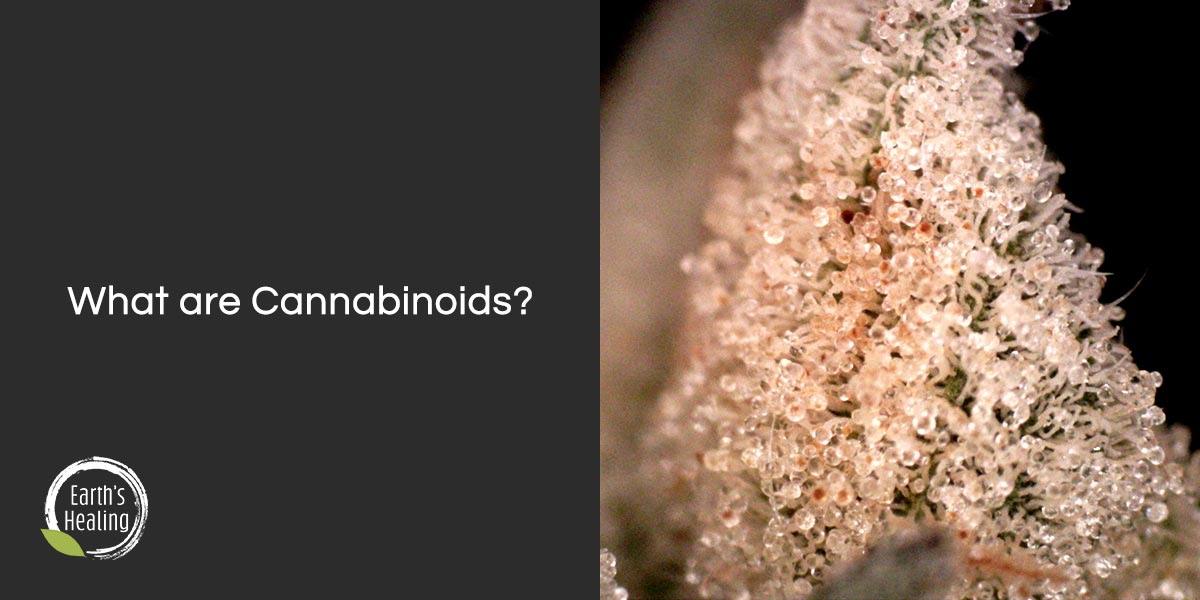
Terpenes are chemical compounds that are produced by a wide array of plants and animals. They make up the largest single class of compounds in the world, 30,000 have been identified to date. Terpenes have a unique odor typically, which acts as a natural function of attracting pollinators or protecting injured tissues in plants from the attack of herbivores, insects, and parasites. Terpenes have also been thought to protect plants from harsh weather, as well as providing specific plants with different aromas, flavors, and colors. Terpenes are used in many ways in our society today, whether it be in essential oil products, cleaning products and cosmetic products.
In terms of cannabis, terpenes are what make certain strains smell or taste different from others. In cannabis there is a high concentration of terpenes, these are second to the concentration of cannabinoids like THC-A and delta-9-THC. In our Earthgrow flower there are six terpenes that are consistently detected at high concentrations. These terpenes are beta Myrcene, delta Limonene, alpha Pinene, beta Caryophyllene, Linalool and Terpinolene. As stated before, these terpenes, in addition to many other terpenes at lower concentrations, give each strain its specific smell and taste. For example, in our Golden Lemons strain there is high concentrations of Terpinolene, alpha Pinene, beta Pinene and beta Myrcene. This gives the flower a distinct aroma of fruity nodes (Terpinolene & Myrcene) as well as a bit of a piney scent (alpha and beta Pinene). With different concentrations of each terpene, every cannabis strain will produce a distinct aroma. If you know which terpenes you favor and give you the desired effect, you can pick the strain that is right for you.
Terpenes occur in nature in many different plants and herbs, terpenes also provide plenty of health benefits on their own, without the inclusion of cannabinoids. Cannabinoids and terpenes work together to give a distinct multifaceted therapeutic outcomes, this is known as the entourage effect. The entourage effect can influence the overall feeling a person is left with after introducing a form of cannabis into the system. Below is a list of the six most common terpenes in our Earthgrow flower, and their role in nature, as well as health benefits.
Beta-Myrcene
Beta-myrcene is the most abundant terpene in cannabis and hops, and is found in a high concentration in mangos, cardamom, verbena, wild thyme, and lemongrass. It is an anti- inflammatory and anti-catabolic compound (reduces muscle and fat breakdown). The interactions it has with cannabinoids is still being investigated, but recent research shows it enhances the effects of THC by increasing its uptake across the blood-brain barrier. Myrcene has also shown the ability to work synergistically with CBD to provide relaxing and sedative effects. Myrcene has been found to modulate GABA receptors. GABA is an inhibitory neurotransmitter and terpenes that influence GABA activity can possess calming and sedative effects.
Delta-limonene
This terpene is found in citrus fruit peel, orange juice, and a wide array of aspens, conifers. It has anxiolytic (anti-anxiety), anti-inflammatory, and anti-cancer properties. Limonene may also elevate anxiolytic (anti-anxiety) properties when interacting with CBD. Limonene can influence serotonin receptors, which are linked to mood regulation and anxiety, which gives them the anxiolytic properties mentioned previously. Limonene is unique in the fact that it may affect dopamine receptors as well, which play a role in mood and motivation.
Beta-Caryophyllene
Beta-Caryophyllene is found in cloves, rosemary, basil, oregano, and black pepper. Reduces inflammation, pain, atherosclerosis, and osteoporosis, and suppresses tumor growth. This is the only terpene to have the ability to bind to CB2 receptors, so in a way it acts as a cannabinoid. This selective binding to CB2 receptors is why beta-caryophyllene is often considered beneficial for its anti-inflammatory and analgesic properties without causing the psychoactive effects typically associated with CB1 receptor activation. There are many therapeutic benefits presented by this terpene. It promotes gastrointestinal health, by helping protect the lining of the digestive tract to reduce risk of IBD (inflammatory bowel disease) like Crohn’s disease and ulcerative colitis. Some research suggests that caryophyllene may have anxiolytic (anxiety-reducing) and antidepressant effects. Research also indicates that caryophyllene may have neuroprotective properties. It can help protect brain cells from damage and oxidative stress, making it a potential candidate for conditions such as Alzheimer’s disease.
Alpha-Pinene
Alpha-Pinene is the most abundant terpene in nature. It has a high concentration in pine trees, wild mint, and holy basil, and rosemary. Alpha-Pinene has anti-inflammatory/antimicrobial properties and is a bronchodilator (widening of the bronchi) at low concentrations. Some studies suggest that alpha pinene may have cognitive enhancing effects. It has the potential to improve alertness and memory retention, making it a prospect for addressing cognitive issues associated with conditions like Alzheimer’s disease, much like caryophyllene. Alpha-Pinene has been investigated for its potential anticancer properties. Some studies have shown that it may inhibit growth of cancer cells, although more research is necessary to understand its full potential.
Linalool
Linalool is a prominent terpene in lavender, rose, Indian bay, and basil. Linalool has established sedative, antidepressant, anticonvulsant (reduces epileptic events) and anxiolytic (anti-anxiety) effects. Linalool is commonly associated with relaxation and stress reduction, due to its calming and sedative effects, linalool is often used to aid in sleep. Linalool, like some other terpenes, has neuroprotective properties, which can potentially provide protection against neurodegenerative disorders.
Terpinolene
Terpinolene is a common terpene in apples, cumin, lilac, tea tree, pine, and fir. It has been used in the treatment of anthogenesis (clogging of arteries) and coronary artery diseases. Terpinolene has shown sedative properties and potential anxietolytic effects, making it potentially useful for individuals seeking stress and anxiety relief. Terpinolene has also been associated with appetite-suppressing effect, which could be beneficial for individuals looking to control their food intake or manage weight. It has shown the ability to modulate cannabinoid receptors. It can impact the way cannabinoids are received and processed by the body (cannabinoid receptor modulation), potentially affecting the intensity and duration of their effects.
More Reading
A Day in the Life of Analytical Scientist Jeremy Brown In the ever-evolving world of cannabis science, a silent hero [...]
Laboratory Information Look for details about the laboratory that performed the analysis. This includes the lab's name, address, contact [...]
Cannabinoids are a diverse group of chemical compounds that are primarily found in the cannabis plant. They interact with the [...]



